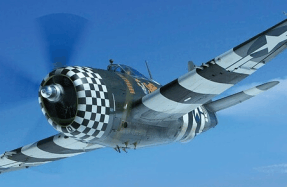EYES IN THE SKY

In this special report from the Smithsonian Institution’s National Air and Space Museum in Washington, D.C., Patrick Sherman of the Roswell Flight Test Crew sits down with curator Roger Connor to talk about the museum’s rapidly expanding collection of modern uncrewed aircraft systems (UAS).



When he was designing the xenomorph for Ridley Scott’s iconic 1979 science fiction-horror classic Alien, Swiss artist H.R. Giger omitted one feature shared by virtually every macroscopic life form on Earth: eyes. Interviewed later about his work, Giger said, “We came to the conclusion that a creature without eyes, driven by instinct alone, would be far more frightening. That’s why I painted a second version of the alien that has no eyes.”
When the word “drone” burst into the public consciousness during the wars in Afghanistan and Iraq in the early 2000s, it was associated with a singular aircraft: the MQ-1 Predator. Even apart from the fact that there was no pilot on board, its configuration was unfamiliar to the general public: straight, narrow wings, like a glider, for long endurance; a V-tail slung beneath the airframe; a pusher-type propeller at the rear; and, in front, a sleek, featureless dome.
Where the cockpit would have been on a crewed aircraft, there was nothing but a smooth surface painted Air Force gray. Like Giger’s alien, it had no eyes and—like the crew of the film’s ship, Nostromo—the American public did not enjoy what it saw. Detractors labeled military drones “flying death robots,” and to this day there remains deep suspicion about their potential abuse, whether launching lethal strikes abroad or conducting surveillance at home.
Nevertheless, the curators of the Smithsonian Institution’s National Air and Space Museum recognized that military drones represented the dawning of a new era
You’re reading a preview, subscribe to read more.
Start your free 30 days





